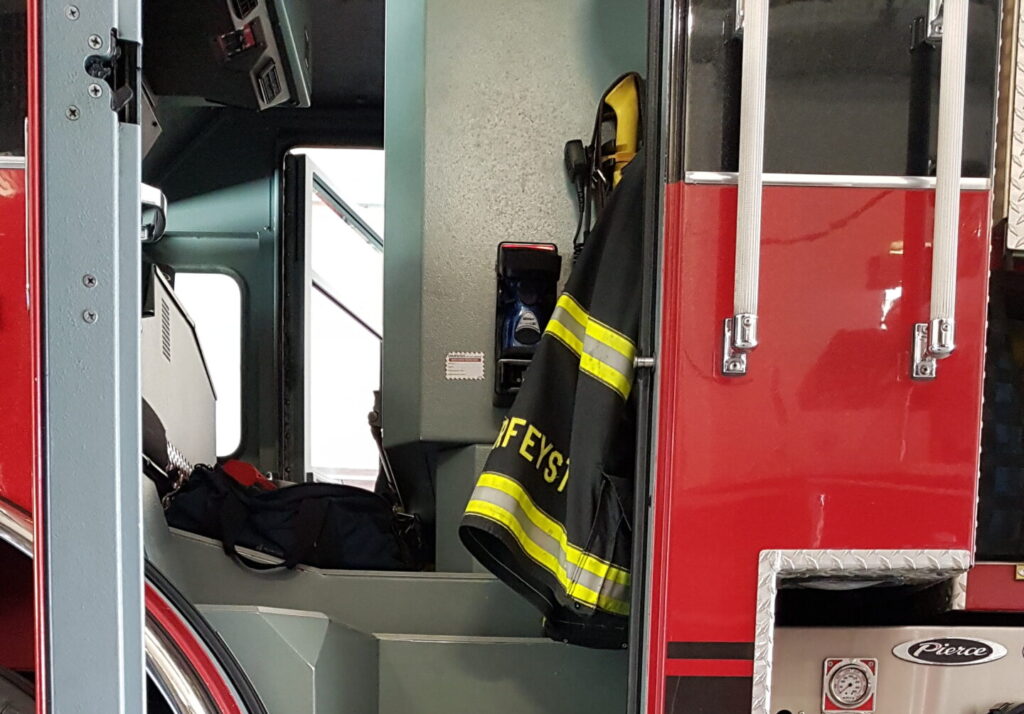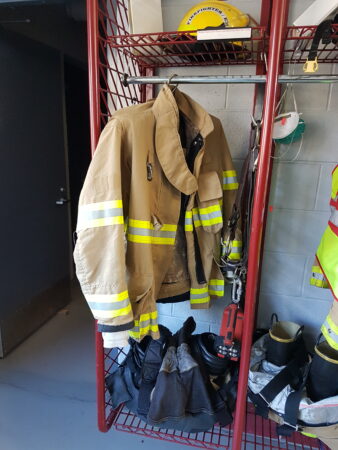
Back to Basics: Desensitizing firefighters – Part 2
By Mark van der Feyst
Features Training canadian firefighter editors pick firefighter training Photo Credit: Mark van der Feyst
Photo Credit: Mark van der Feyst In our continuing series of desensitizing firefighters, we are going to focus on the topic of personal protective equipment (PPE). Although this may seem like a very basic area to look at, it is actually the opposite. PPE forms the nucleus, or the foundation, upon which everything else falls upon. When we look at the series of mishaps or dominoes that are lined up in a chain of events, much of the time, PPE was missing or was not used as it needs to be – thus leading to the bad outcome.
Let’s start with inspecting PPE, because there are two areas that need to be addressed here. The first deals with PPE being inspected on an annual basis, and the second deals with the regular inspection by the user.
The annual inspection is a mandated requirement for PPE items like structural coats, pants, helmets, gloves, hoods and boots. This is where a third-party provider will inspect the gear, perform testing on it—such as hydrostatic testing to ensure that the vapour barrier is still intact and not compromised—and give it a failing or passing grade based upon the condition of the gear. One of the factors of consideration is the age of the gear; it needs to be within the recommended 10-year lifespan from its manufacturer date. Every year, this needs to be done to ensure the user is protected when they are wearing it.
The regular inspection is to be done by the user themselves. As the word “regular” denotes, this is to be done on a consistent and constant basis. This refers to every time the PPE is used and after it has been used, it needs to be inspected. The responsibility to ensure that PPE is ready and safe lies upon the user – it forms the Internal Responsibility System (IRS) as legislated in most health and safety acts. Examples of what to look for are rips, tears, degradation of material, discolouration of material and holes.
One benefit of doing regular inspections is to account for any items that may be missing. Like the old joke about the dryer where socks seem to go missing, the same thing can occur with our gear; we can have missing components such as our gloves, hood, safety glasses, DRD strap, etc. With respect to the DRD strap, this can be a common missing component in that it is not installed properly after cleaning. Whether done by a third-party provider or by the user themselves, the DRD can be re-installed incorrectly. I have personally found my DRD strap in my coat and my safety harness in my pants, reinstalled incorrectly after being sent out for cleaning. It was only on my own inspection that I discovered this missing component. With missing components of PPE, the user will not be properly protected and will not be able to complete their job.

Being combat ready starts with having all PPE present and accounted for. Photo Credit: Mark van der Feyst
Another factor that leads to desensitizing a firefighter is with their PPE being “combat ready”. This refers to a readied state being always maintained by the firefighter, and it begins with the culture of the department – with leadership encouraging each person to be combat ready at all times. If the culture does not support this, then the membership will not follow suit as well as a department that does foster this type of culture.
With respect to PPE, being combat ready starts with having all PPE present and accounted for and set up in a fashion that will allow the user to quickly and easily access their gear for donning. Regardless of the department model, being a full-time, part-time or volunteer type, the same principle applies to all. In both photos you will see examples of how gear can be set up for quick and easy access for donning. Photo one is from a full-time fire department and photo two is from a part-time fire department. Notice how the items are laid out for the user to don in a certain sequence—this is part of being combat ready.
When responding to a call, the clock has already started, and we want to beat the clock by getting dressed quickly so that the truck can leave the station in a short time frame. This will only happen when the team is constantly in a readied state, and the starting point is going to be with prepared PPE. What we don’t want to have is our gear sitting in a gear bag by the truck or inside a locker – this is not gear that is ready to go at any moment.
This may seem like a redundant discussion topic, but we can see how this is a common area that is overlooked or not being addressed regularly, that can cause other issues as a result. If we address the smaller issues that cause firefighters to become desensitized, then the bigger issues will take care of themselves and be easier to deal with.
Mark van der Feyst has been in the fire service since 1999 and is currently a firefighter with the FGFD. Mark is an international instructor teaching in Canada, the United States, FDIC and India. He is the lead Author of Fire Engineering’s Residential Fire Rescue & Tactical Firefighter books. He can be contacted at Mark@FireStarTraining.com.
Print this page
Advertisement
- Oshawa Fire Services opens state-of-the-art training facility
- Two people rushed to hospital after apartment fire in Toronto